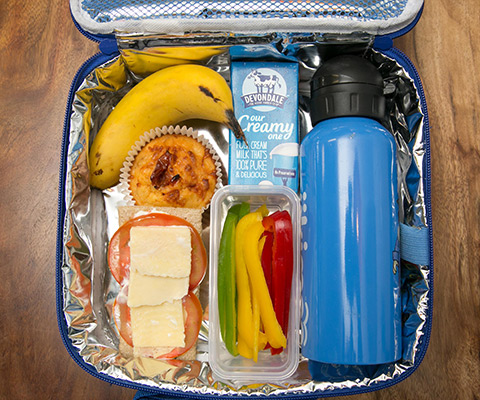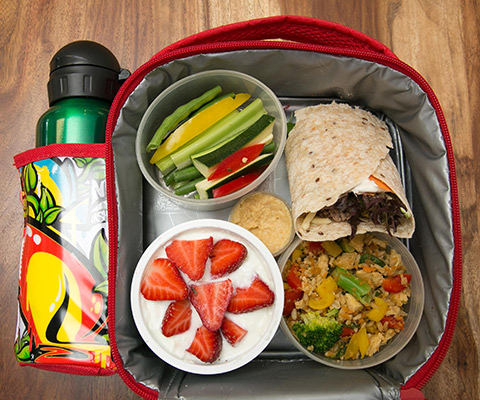It’s back to school this week, and Southern NSW Local Health District (SNSWLHD) dietitian Paula Cauduro has some expert advice on healthy lunchboxes, with top tips for food that’s quick, easy to prepare and nutritious. Ms Cauduro said good nutrition is vital for growing bodies – and preparing a healthy school lunchbox can be easier than we think. “Choosing a variety of foods is important, and even if children have their favourites, it’s wise to encourage new and different food experiences. Choose food that will carry without spoiling, and pack foods in a form your child can manage. Don’t forget eye appeal – food that looks attractive is more likely to be eaten,” Ms Cauduro said. Results of the NSW Child Population Health Survey, released in 2017, found that half of children (50 per cent) eat an unhealthy snack (a salty snack, biscuit or cake) every day, and many children are still not eating enough fruits and vegetables. “A number of snack foods marketed to children as lunchbox fillers are actually junk foods, which aren’t the best option for growing bodies. A healthy lunchbox includes core foods such as vegetables, fruits, grains, reduced fat dairy and lean protein foods. Including a frozen water bottle or small freezer brick in your child’s lunchbox can help it keep cool until lunch time.”

Tips for packing a healthy lunchbox: • Fresh fruit is easy to pack, and you could also try a tub of canned fruit or chopped fresh strawberries, pineapple or melon. • Raw veggies such as carrot sticks, cherry tomatoes, cucumber or capsicum strips are popular as a snack or in a sandwich. • Experiment with a variety of grains, such as wholegrain, wholemeal or high fibre seeded rolls, Lebanese bread, pita, lavash, bagels, brown and white rice, or tricolour pasta. • Include lean protein such as tuna or salmon (fresh or canned in spring water or oils such as canola, sunflower or olive oil); boiled eggs; baked beans; or lean meat such as beef or chicken. • Nuts (depending on your school’s policy) and seeds, such as pumpkin and sunflower, can provide healthy unsaturated fats, proteins, vitamins and minerals. • Reduced fat dairy is best for children aged 2 and over, so include reduced fat yoghurt, reduced fat cheese or reduced fat milk. • Treats like chocolate or chips should only be included occasionally, not every day. Include nutritious snacks such as a small box or bag of dried fruit, rice cakes or unsalted and unsweetened popcorn. • Don’t forget to include a bottle of water to keep your child hydrated all day. Freeze on hot days to keep the lunchbox (and your child) nice and cool. • For more great lunchbox ideas, visit http://www.healthykids.nsw.gov.au








